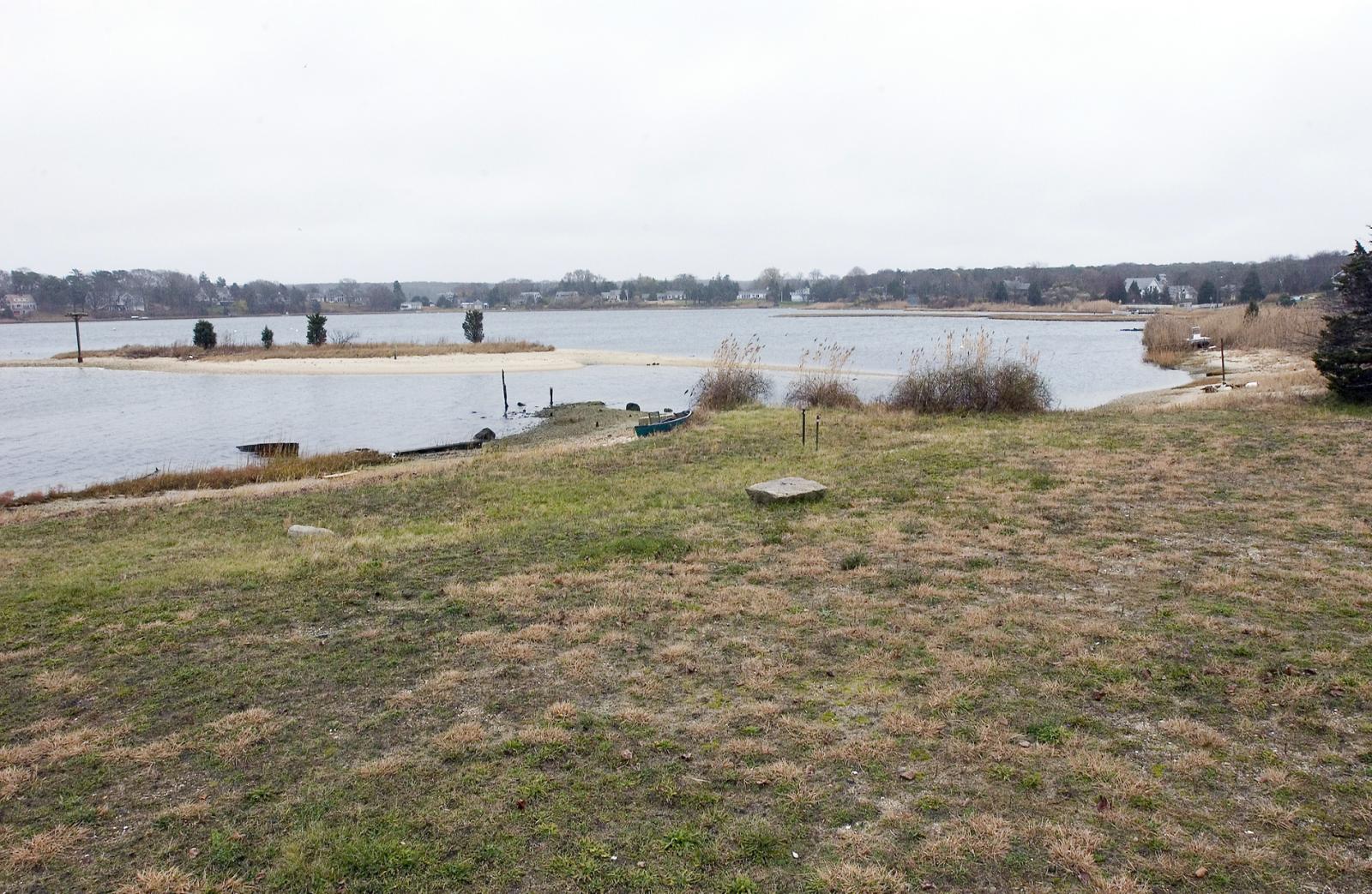Some 20 years ago, property developer Sam Dunn precipitated a major development battle with his plan for what is today the Tisbury Marketplace, a small commercial complex off Beach Road in Vineyard Haven. Now history could repeat itself, as he plans a new development beside the original.
As most recently advanced — Mr. Dunn has tried a couple of times since the original development — the planned building of some 7,000 square feet would be located on land between the marketplace and Lagoon Pond.
He has yet to present yet another, even more recent version of the plan, but already the forces of opposition are marshaling.
“This is shaping as a big one,” said Brendan O’Neill, executive director of the Vineyard Conservation Society.
“It’s right out on that lovely little green space, beside the Tisbury Marketplace, overlooking Lagoon Pond.
“There’s a widespread public perception that it’s somehow conservation land or something. In a way, through the regulatory process, it was saved, but it was not made conservation land.
“He was told back then he wouldn’t get all he wanted; they gave him what you see down there now, with the assumption that was it. And now, 20 years later, we have a proposal for boat sheds and buildings and all kinds of stuff.”
In truth, no one knows exactly what the proposal ultimately will be. Mr. Dunn is currently reworking it, and is expected to have the new version ready within weeks.
As most recently advanced, though, according to John Best, a member of the Tisbury conservation commission, the development was to be located just 50 feet from the water, astride a zoning boundary between the coastal and marine districts in Vineyard Haven.
“In the marine district you had to have marine-related uses, but you can have living space above,” Mr. Best said.
“So in the half closest to the water, 50 feet of the building, virtually half, the lower level he called a boat shed. What’s a boat shed? He was noncommittal. It was a big open space. The second floor was going to be a single apartment.
On the other half, outside that district, it was to be retail on the first floor and office space above.”
Mr. Best recounted some of the long history of the plan.
After the original development was limited in size, he said, Mr. Dunn retained development rights to the remaining green space.
“They tried extending it, but the Martha’s Vineyard Commission denied it in the late eighties, because of wastewater concerns,” he said. “It was deemed to be in a rather fragile area, and in fact, that big center, landscaped raised median in the marketplace parking lot is actually a mounded septic system.
“It had to be raised because the groundwater was so high. But when the sewer system was extended down Beach Road a few years ago, that was turned off.
“Once the sewer was in, Mr. Dunn obviously realized he could argue the reason he could not expand was gone because there was no wastewater issue any more, and he came back with a new application.
“He brought it to the planning board maybe six months ago and to the conservation commission maybe four months ago, which is when I first got wind of it.”
“A bunch of issues came up,” said Mr. Best. “For one, he had expanded parking for the new building and the planning board told him we don’t allow that much parking anymore. In that whole area along Beach Road, parking is restricted to 10 per cent of the land area. Because the Tisbury Marketplace area predates that bylaw, it has well in excess of that amount now.”
Furthermore, he said, the marketplace benefitted by a what he called a precedent-setting decision several years ago, which allowed the paving of the parking lot.
“We don’t usually allow paving along Beach Road, because we want it to remain permeable, for better absorption of pollutants and for flood control. We made the exception because they had such a high ratio of open space to impermeable surfaces.
“Now he’s looking at taking away a lot of that open space on which we predicated that decision.
“We generally don’t look favorably on development within 100 feet of the water,” Mr. Best said.
“We referred it as a DRI [development of regional impact], and he went to the land use planning committee of the Martha’s Vineyard Commission.”
Then, Mr. Best said, the developer withdrew the plan for reworking.
Mr. Dunn, when contacted, declined to talk about his plans, other than to say he was refining them, and would come back to the commission within a month or so.
The next move may be expected some time early in the new year.




Comments
Comment policy »